This laptop we are going to review is the Lenovo ThinkPad X1 Carbon 10th Gen. Since its launch, the ThinkPad X1 Carbon series has been primarily known for its unique craftsmanship, exceptional performance, and outstanding portability. The model we got for review is powered by Intel’s latest 12th Gen Core P-Series processors, which, like the Intel U-Series chipsets, are designed for business laptops. However, a significant difference between the P-series and the U-series is that the P-series consumes more power and has better single-core and multi-core performance.
All aspects of the ThinkPad X1 Carbon Gen 10 are discussed in detail below:
Specifications
| Screen | 14″ 2.2K (2240 x 1400) IPS Display, 300 nits, Low Blue-Light emissions, antiglare |
| Processor | 12th Generation Intel Core i7-1260P Processor (E-Core Max 3.40 GHz, P-Core Max 4.70 GHz with Turbo Boost, 12 Cores, 16 Threads, 18 MB Cache) |
| Wireless Connection | Intel Wi-Fi 6E AX211 802.11AX (2 x 2) , Bluetooth 5.2 |
| Graphics card | Integrated Intel Iris Xe Graphics |
| Memory | 16 GB LPDDR5 RAM, clocked at 5200MHz (onboard) |
| Storage | 512 GB PCIe SSD Gen 4, Samsung PM9A1 |
| Ports | 2x USB Type-C Thunderbolt 4 2x USB Type-A 3.2 Gen 1 1x HDMI 1x 3.5mm headphone jack 1x Nano SIM slot |
| Battery | 57Whrs 4-cell Lithium-ion battery with 65W AC adaptor |
| OS | Windows 11 Pro |
| Weight | 1.12 kg (2.48 lbs), dimensions: 315.6 x 221.5 x 14.9 mm |
Design
The ThinkPad X1 Carbon series is known for its unique design, premium materials, and outstanding portability. To maintain the standards of this lineup, the new generation models are made of aircraft-grade fibers. The laptop weighs 1.12 kg and the thickness is 14.9 mm. In use, this laptop feels unique, lightweight, and slim.
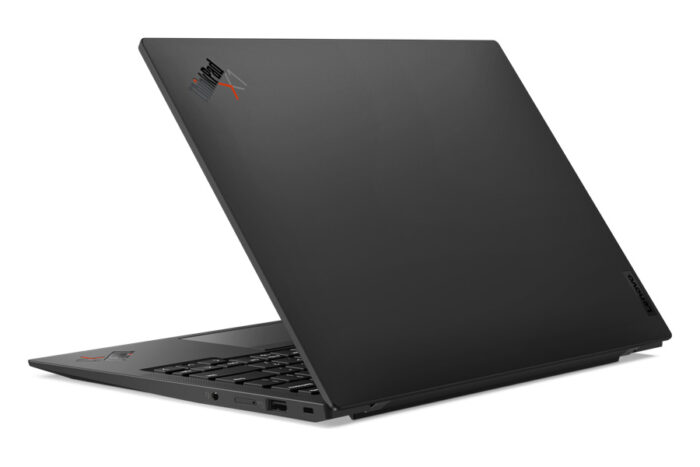
The entire body is black, which is the only color available for this model. The fiber texture on the display case feels very smooth to the touch. The ThinkPad X1 logo is embedded in the top left corner. Two colors are used in the “X” part of the “X1” logo: red and black represent the classic colors of the ThinkPad. There is also a Lenovo nameplate in the lower right corner.
It is worth mentioning that the X1 Carbon Gen 10 supports a maximum opening angle of 180°, making it easy for users to share screen content with others. Not only that, but it also allows users to use the laptop from different angles.
Display
As officially stated, the X1 Carbon Gen 10 comes with a 14-inch anti-glare IPS display that supports a 2.2K (2240 x 1400) resolution and 300 nits of brightness. This display supports the DCI-P3 color gamut, HDR400, and Dolby Vision. The display is Rheinland Low Blue Light certified, ensuring that users’ eyes are protected from harmful blue light.

The bezels on the left and right sides of the display are very narrow. The top bezel also has a camera module and a ThinkShutter (a camera switch for blocking the camera when not needed).
It’s worth mentioning that the webcam in this laptop isn’t simple. It comes with a Computer Vision Smart Eye sensing system that can easily identify whether the user is using the laptop or not. If not, then it locks the screen. Then, if the user activates again, the screen is automatically unlocked. Another feature called “Stranger Detection” can detect strangers approaching you from behind. When strangers are detected, the feature blurs the display and pops up a warning window to alert you to these strangers, making the laptop experience safer.
Screen quality is crucial for business laptops, and the eye protection feature is a must-have if you plan to use the notebook for extended periods. However, in the case of X1 Carbon Gen 10, we can say that the screen completely meets the standards of a business notebook.
Keyboard and Touchpad
The X1 Carbon Gen 10 features a spill-resistant keyboard (without a numeric keypad) and supports a white LED backlight. In this keyboard, we experience some of the key highlights, including long key travel and crisp flex feedback.
For a business laptop, the keyboard should provide a comfortable feel. To learn this aspect of the keyboard, we conducted a brief test by writing several paragraphs. After almost 2 hours of writing, the writer found no pain or any tiredness in his wrists and fingers.
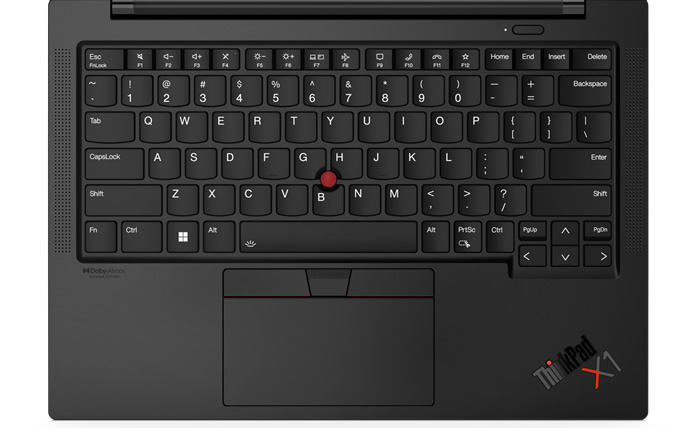
In the official introduction, the company also mentioned that the keyboard area is designed with auxiliary air intakes. There is no doubt that the keyboard design is very simple, but that doesn’t matter because it is equipped with a better air intake system.
In the upper right corner of the keyboard, there is a power button, which also integrates a fingerprint sensor. It is worth mentioning that this fingerprint sensor is based on advanced technology. Unlike the older fingerprint sensors, it does not support finger swiping. When the power button is turned on, the fingerprint can be quickly and directly identified in the system. Additionally, the login experience of entering a fingerprint is significantly better than entering a password.
In the bottom right corner below the keyboard, there is another ThinkPad X1 logo. The entire keyboard area is coated with a skin-like material, making it comfortable to rest your palm on while typing.
Below the keyboard is a touchpad, which is 110mm wide. This touchpad is unique because it has a left and right button and a pointing stick.
After using the touchpad for a while, we observed that the surface is relatively smooth and soft, and the control is also precise. In terms of controllability, this is one of the best touchpads in a laptop for Windows.
On both the left and right sides of the keyboard, the manufacturer has placed speaker openings, which help provide better and clearer sound to the user. The laptop comes with a Dolby Atmos panoramic speaker system, which consists of four speaker modules. As a business notebook, the most important thing for the speaker is that the audio during the call must be clear. In the case of this laptop, the audio quality is excellent.
Ports
Business laptops are usually thin and light. To make them more refined, manufacturers have begun to avoid using different port types to reduce thickness. Even some manufacturers use a full Type-C port as a standard port. However, the X1 Carbon Gen 10 still maintains a thin body and has a variety of ports.
On the right side, it has a USB Type-A 3.2 Gen 1 port, a Nano SIM card slot, and a 3.5mm headphone jack. It is worth mentioning that the SIM card slot is optional in this laptop.
On the left side, there are two USB Type-C Thunderbolt 4 ports (supporting 40Gbps data transfer, 4K/8K video output, and 100W PD charging), another USB Type-A 3.2 Gen 1 port, and an HDMI 2.0b port. With so many ports, there is no need to carry an external docking station in normal office use.
Battery and Charging
The ThinkPad X1 Carbon Gen 10 comes with a 4-cell 57WH lithium-ion battery pack, and to check the performance of the battery, we conducted a test that set the laptop to the following settings: 70% screen brightness, 50% volume, enable Wi-Fi and Bluetooth, and set the battery mode to energy-saving mode. With PCMark 10 software, the laptop offers about 12 hours of battery life. If we reduce the brightness, we expect a more significant increase in battery life. The laptop comes with a slim 65W AC Type-C adapter that supports fast charging via the Thunderbolt 4 port.
RAM and SSD
Before we get to the RAM, it is worth mentioning that this is the first business laptop with DDR5 RAM that we’ve reviewed, so the benchmarks will be quite interesting. Our X1 Carbon Gen 10 comes with 16GB of LPDDR5 RAM, which is not bad for a business laptop. The laptop is also available with 32GB of RAM, but it can’t be upgraded as the RAM is soldered to the motherboard.
To check the performance of the memory, we tested it with AIDA64. The results were as follows: a read speed of 70,511 MB/s, a write speed of 63,432 MB/s, a copy speed of 72,318 MB/s, and a latency of 92.4 ns. The performance advantage over the DDR4 memory is significant. Overall, the performance of this memory is the best among business laptops.
The laptop comes with a 512GB M.2 2280 PCIe 4.0 SSD, and it can be upgraded up to 2TB. Using CrystalDiskMark benchmarks, we got the following results: a read speed of 6731.16 MB/s, a write speed of 4808.57 MB/s, and the 4K Random read and write speeds of 77.12 MB/s and 131.85 MB/s, respectively. 131.85MB/s. Compared to the PCIe 3.0 SSD, the scores have doubled. The overall SSD performance on the X1 Carbon Gen 10 is satisfactory. However, if you plan to use this laptop for office purposes, we recommend opting for a higher-capacity SSD.
CPU Benchmark
The Core i7-1260P has 12 cores (including four performance cores and eight power-saving cores) and 16 threads, with the performance cores reaching a higher frequency of 4.7 GHz. In comparison, the maximum frequency of the energy-efficient core is 3.4 GHz, the cache is 18MB, and the default TDP is 28W. Below, we’ve run some benchmarks on the CPU.
CPU-Z: The single-core score is 681.2 points, and the multi-core score is 5264.5 points. The benchmark score is relatively good, indicating that the laptop can easily handle all daily office applications.
Cinebench: The single-core score is 237cb and the multi-core score is 1616cb. On Cinebench R20, the single-core score is 641cb and the multi-core score is 3995cb. On Cinebench R23, it scored 1664 points on single-core and 10563 points on multi-core. The score indicates that the ThinkPad X1 Carbon Gen 10 has more than enough reliability levels.
X264 FHD: In this test, the laptop took 47 seconds to complete 2510 frames. With an average frame rate of 53.58 fps, the laptop’s video encoding performance is excellent.
V-Ray: The laptop scored 6792 Vsamples, which indicates that the X1 Carbon Gen 10 can run not only office applications but also memory-intensive applications.
Heat Dissipation and Stress Test
At the bottom, the manufacturer has placed the first air intake in the keyboard area, followed by a secondary air intake. Surprisingly, the cooling system of this laptop also includes a built-in dual fan, which is rare in ultra-thin laptops. The laptop also features a rear ventilation design. All of these aspects ensure that the X1 Carbon Gen 10’s cooling performance is incredible.
For the stress test, we used the AIDA64 Stress FPU test. After a while, the power consumption reached 30.5W when all 12 cores were between 89°C and 97°C (only three cores reached 96-97°C), and the frequency stabilized at 2.6 GHz. In the test scenarios, the thermal performance was exactly as expected, and the power consumption performance exceeded expectations.
Also Read: Lenovo Legion 5i Pro 2022 Review (Core i7-12700H, RTX 3060)
Summarize
After using it for a while, we can say that the ThinkPad X1 Carbon Gen 10 is perfect for consumers looking for a new laptop for office use, as well as for graphic designers who work in entry-level jobs.
First of all, the performance of this laptop is excellent, thanks to the new Core i7-1260P processor. This processor can easily handle a wide range of everyday office applications as well as applications with high specification requirements.
The second highlight is the laptop’s security. Fingerprint sensor and face recognition ensure privacy, and ThinkShutter prevents privacy breaches. Another feature, called the “Smart Eye Sensor System”, takes privacy protection to a new level.
Finally, the design of this laptop, including high-end quality, superb workmanship, excellent keyboard and touchpad controls, is another reason why you should choose it. Overall, the ThinkPad X1 Carbon Gen 10 is undoubtedly one of the best choices for those on a budget.


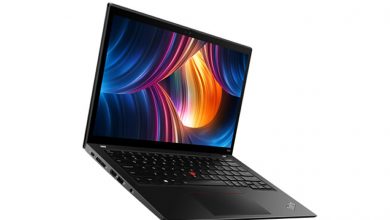
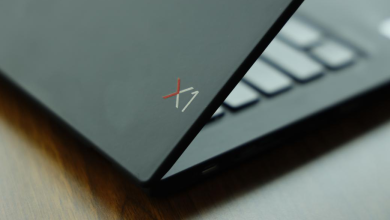
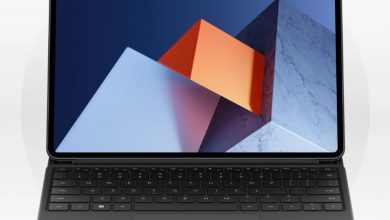
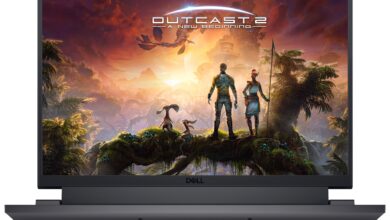
I’m just wrapping up my Gen 10 to be sent back to Lenovo. The heat dissipation part mentioned above was either broken or just not working. The left side of the laptop got unbearably hot during use (plugged in or battery). I saw processor temps at 100 degrees Celsius. Battery life was also dismal. It’s not worth the trouble, I’m going to order the Gen 9.
If in normal usage scenarios, its CPU temperature should not exceed 100 degrees Celsius, the cooling system of this laptop uses dual fans, it should be able to handle Alder Lake-P processors enough, your laptop may have a problem, so it’s a good idea to return it to Lenovo.
According to the latest feedback from Lenovo’s technical support staff, Lenovo has released an updated BIOS for the X1 Carbon Gen 10 to fix temperature anomalies.
Same, waiting for the return label, the air is not pumped out on a side (as in T14s or X1 pre-Gen8), instead it should go up in front of the screen (as in MacBook, but in MacBook it actually does go up) but it goes straight to the hinge, so the path is obstructed and just heats up the hinge and the screen, also MacBook’s intake is on the side so you can put it on the lap without covering it, in X1 it’s underneath and to let air go under a ridge was added to bring the laptop up. Sure, two small fans would handle the heat, but the noise is unbearable. All in all, cooling in X1 is terrible. I would sacrifice better audio and a worthless 4k screen (slow response time) and go with T14s.